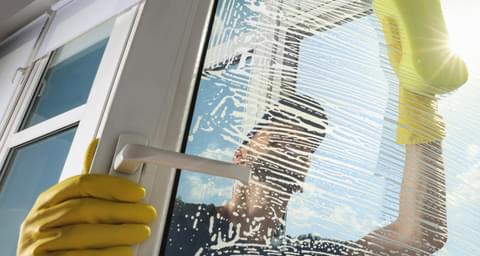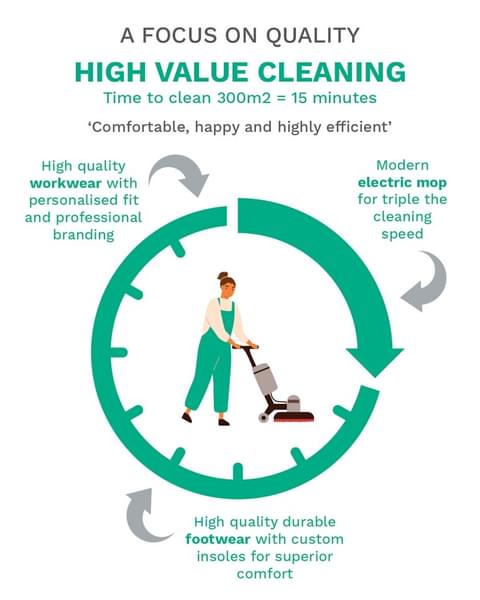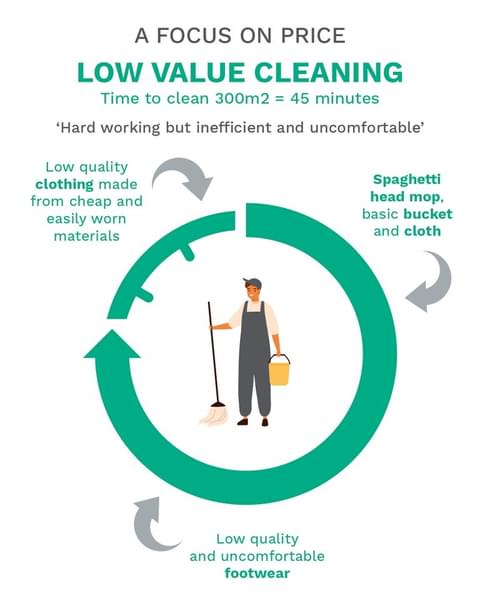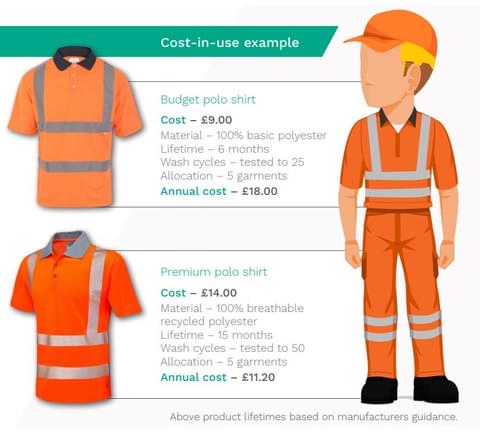
Did you know that on average, labour makes up 85 percent of the operating costs for cleaning companies? This means that every investment you make in the efficiency of your staff matters.
But too often, I see cleaning companies hesitate to spend more on equipment and workwear, worried it will stretch their budgets. That mindset doesn’t just leave floors dirty; it leaves money on the table!
Picture this: Cleaner B (pictured below) is using a spaghetti mop, budget workwear, and basic footwear. Cleaner A, on the other hand, is equipped with a high-performance automatic floor scrubber, durable, high quality workwear, and suitable, comfortable footwear with custom insoles for added comfort and productivity.
Not only is Cleaner A happier, more comfortable (and therefore more likely to be retained), but they clean floors three times faster than their counterpart.
That’s a 200 percent productivity boost, without adding a single labour hour!


All this from simply changing how and what you determine to be 'good value'.
If good value is simply the most economical price, then you end up with a cleaner who is no doubt hard working, but is much more likely to be inefficient, uncomfortable, and ultimately, unhappy in the workplace.
But if good value is in fact your ROI over several years by investing smartly in your labour, then you quickly get high value cleaning from someone who is comfortable, happy, and extremely efficient.
Not convinced? Let's crunch some numbers across a workforce of say... 1,000 people?
If each cleaner saves just 20 minutes per shift thanks to better gear, that adds up to 333 labour hours saved per day. Over a year (assuming 260 working days), that’s 86,580 hours saved.
At £15 per hour, that’s more than £1.3 million in gross annual labour cost savings.
Now, what would it cost to unlock that kind of efficiency?
Let’s say your total upgrade (including high-performance equipment, durable workwear, and footwear) averages £500 per cleaner. Across a 1,000-person workforce, that’s a £500,000 investment.
But no one’s suggesting you spend half a million overnight! Most organisations phase their investment, starting with high-impact roles, priority sites, or the most outdated gear.
Even a partial rollout can unlock significant savings. For example, upgrading just 200 cleaners could still save over £260,000 annually, with a much smaller upfront cost.
The key is to start smart, track the impact, and scale what works. We can help you calculate and plan your investment in quality over quantity. That's what we do as a strategic partner.
It’s not just about speed. It’s about durability and long-term value.
A premium hi-vis polo may cost 55 percent more upfront, but its annual cost of ownership is over 60 percent lower than a budget option. Multiply that across 1,000 staff and you’re looking at tens of thousands saved plus fewer replacements and less waste.

The same goes for footwear. Durable shoes with custom insoles reduce fatigue, absenteeism, and injury risk. Even a modest 5 percent increase in output per labour hour can unlock hundreds of thousands in added service capacity or reduced overtime.
This is where the right supplier makes all the difference.
At Tower, we don’t just deliver products. We help you optimise them. Through regular product reviews, rationalisation projects, and streamlined catalogues focused on high-value SKUs, we make sure every item contributes to your bottom line (and your brand!).
Our approach is built on one principle: value over price.
When your teams are equipped to perform at their best, your business grows, not just in profit, but in reputation.
So next time you review budgets, ask not what’s cheapest, but what delivers the most value over time.
